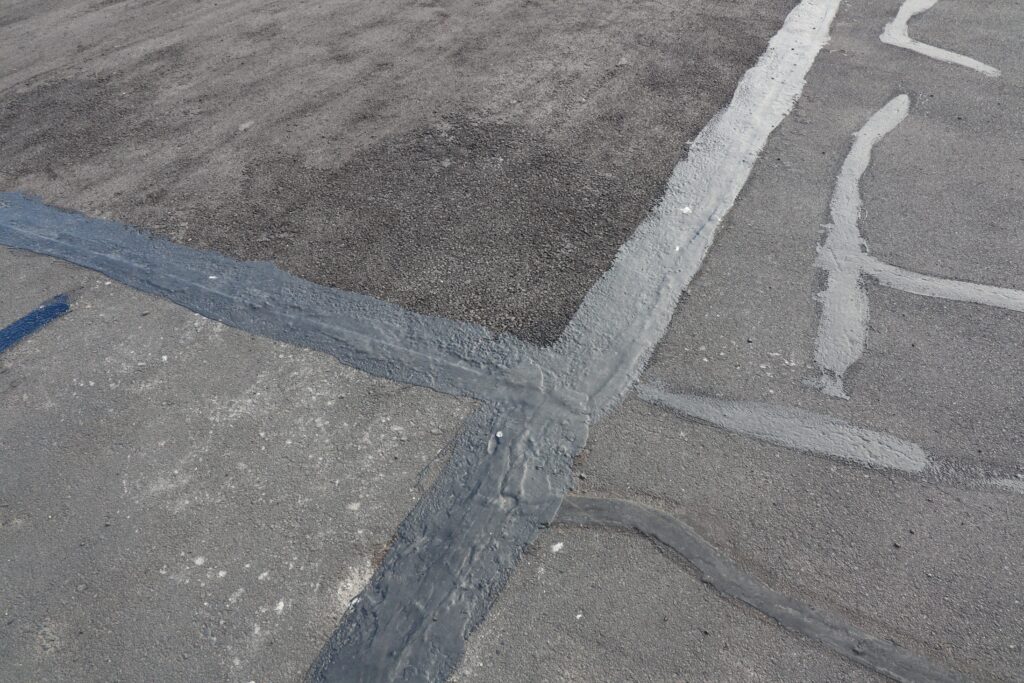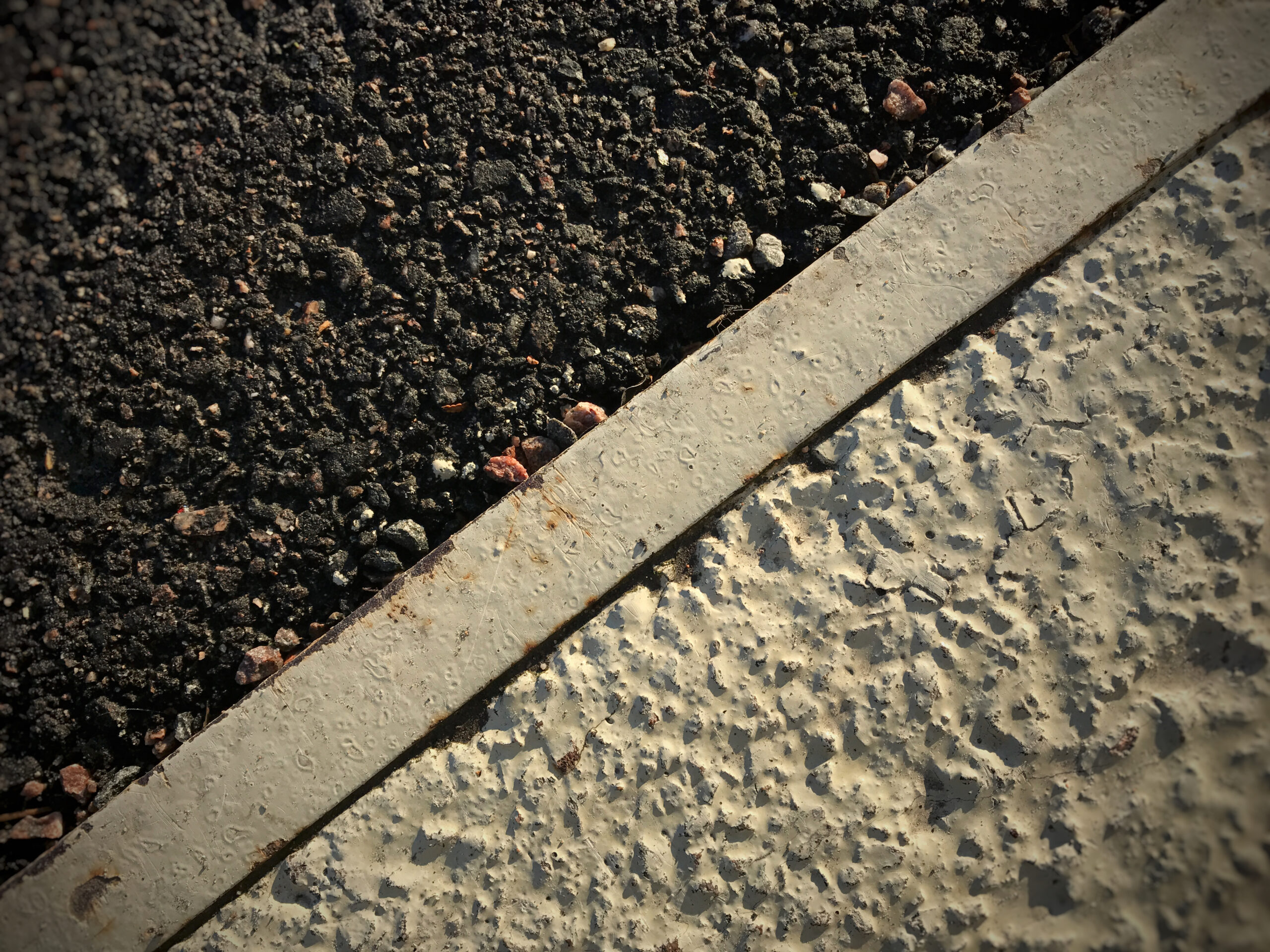
Asphalt doesn’t stay smooth and black forever. With time, it fades, cracks, and starts soaking in water and oil, things that slowly break it down.
If you ignore these signs for too long, you’re looking at serious damage and costly repairs down the road. But sealcoating your asphalt too often isn’t great either; it can cause buildup and peeling.
That’s why sealcoating every 2 to 3 years is usually all you need. In this blog, we’ll explain why that timeline works, what factors might change it, and how to know when your asphalt’s ready for a fresh coat.
Why Sealcoating Is Essential for Asphalt Longevity
Asphalt is a durable material, but it’s not indestructible. Over time, exposure to elements such as harsh weather conditions, traffic, and UV rays, etc., weakens the surface.
To prevent these damages, asphalt needs scheduled sealcoating.
Here’s what it does:
- Protects against UV rays that dry out and weaken the asphalt
- Repels water, which can seep into cracks and cause them to widen
- Resists oil, gas, and chemical stains
- Improves appearance, restoring a dark black finish
How Often Does Your Asphalt Need Sealcoating
As a general rule, you should sealcoat your asphalt every 2 to 3 years. But this isn’t a one-size-fits-all timeline.
Let’s break it down:
- Residential Driveways:
Typically, every 3 years is enough, assuming moderate use and no extreme weather. - Commercial Parking Lots:
Higher traffic and heavier vehicles may require sealcoating every 2 years. - New Asphalt:
Shouldn’t be sealcoated immediately. Wait 6 to 12 months after installation to allow it to fully cure.
Doing it more often than necessary won’t give you extra protection. It can lead to surface buildup, peeling, and wasted money. Stick to the right schedule and inspect your surface each year to catch any issues early.
Factors that Affect Sealcoating Frequency
The lifespan of your asphalt sealcoat depends on a mix of environmental conditions, usage, and how well the surface is maintained.
Here are the main factors that come into play.
1. Traffic Load
More traffic means more wear. A driveway with one or two vehicles lasts longer between coats than a busy retail parking lot.
2. Weather Conditions
Areas with harsh winters, snowplows, freeze-thaw cycles, or strong sun exposure will need more frequent maintenance.
3. Drainage and Surface Grading
Poor drainage allows water to pool, increasing the risk of damage. These areas may require sealcoating more often.
4. Previous Maintenance
Regular crack filling and cleaning go a long way in preserving the asphalt. Well-maintained surfaces typically don’t need sealcoating as frequently.
5. Type of Sealant Used
There are different types of sealants (coal tar, asphalt-based, acrylic, etc.). Higher-quality or thicker applications may last longer.
Keep in mind that if you’ve installed new asphalt, such as a driveway or parking lot on your property, you do not need immediate sealcoating. New asphalts require from 90 days to 12 months before they can be sealcoated.
Applying sealant too soon can trap oils and weaken the bond. During this curing period, keep the surface clean, fill any early cracks, and monitor for settling. Once fully cured, start your 2–3 year sealcoating cycle.
Signs That It’s Time to Sealcoat
Asphalt naturally wears down over time, but certain visual and structural clues indicate it’s time for a new sealcoat. Here’s what to watch for.
- Faded color: Asphalt should be dark black. If it’s gray or patchy, the sealcoat has worn off.
- Small cracks forming: These are early indicators that moisture is starting to penetrate the surface.
- Rough surface texture: If the surface feels dry or brittle, it’s likely time for a new coat.
- Water soaks in: A sealed surface will cause water to bead. If it absorbs instead, the protection is gone.
- Stains or oil marks: Sealcoating helps resist chemical damage. Visible stains can be a clue that it’s wearing thin.
- Loose gravel or surface particles: Granules breaking free mean the binder is weakening and can no longer hold the surface together.
- Weeds or grass in cracks: Plant growth in small fissures shows that moisture and debris have settled. These are signs the sealcoat barrier has failed.
If you see any combination of the above, it’s best to schedule sealcoating soon before the damage spreads.
What Happens If You Skip Sealcoating?
Never skip sealcoating your asphalt because it can lead to much bigger issues later on. You may want to cut costs by skipping, but in reality, you’ll end up paying a hefty bill down the line.
Let’s see why skipping asphalt sealcoating is a bad idea:
- Potholes pop up: Water tends to seep into tiny cracks. When it freezes, those cracks spread and turn into potholes.
- Crusty, brittle asphalt: Sun and oxidation dry out the surface and make it stiffer over time. Next thing you know, it’s flaking and cracking.
- Soft spots underfoot: Moisture can work its way under the top layer and significantly weaken the base. Repairing the full pavement can cost five to ten times more than a sealcoat.
- Safety worries: Cracks and holes create trip hazards and can damage vehicles, plus you could be liable if someone gets hurt.
A quick sealcoat every few years keeps small issues from turning into big, expensive problems.
DIY vs. Professional Sealcoating: What’s Better?
At first, sealcoating may look straightforward, but in reality, that isn’t the case. You may feel the need to sealcoat your asphalt yourself to save some money, but a professional service might be a better option.
Let’s compare both.
| DIY | Professional | |
| Cost | Lower upfront | Higher, but better long-term value |
| Materials | Often lower quality | Commercial-grade sealants |
| Surface Prep | Minimal tools | Full cleaning, crack sealing |
| Application | Risk of uneven finish | Uniform, smooth, and consistent |
| Durability | May last 1–2 years | Typically lasts 2–3 years or more |
For small residential driveways, DIY might work if you follow directions closely. But for commercial lots, larger surfaces, or aged asphalt, a professional job is usually the smarter investment. You get a cleaner, longer-lasting finish and avoid mistakes that could shorten the lifespan of your pavement.
Frequently Asked Questions
Can you seal asphalt too much?
Yes, sealing asphalt too often can cause buildup, cracking, and peeling. Most surfaces only need sealcoating every 2 to 3 years. Applying it more frequently doesn’t add protection and may actually harm the pavement.
How long does sealcoating take to cure?
Sealcoating typically takes 24 to 48 hours to fully cure under normal weather conditions. However, colder temperatures or high humidity can extend the curing time.
How to make asphalt shiny?
Fresh sealcoating naturally gives asphalt a rich, black, slightly glossy finish. To keep it shiny:
- Sealcoat every few years
- Clean the surface regularly
- Avoid heavy oil or chemical spills
There’s no need for extra treatments as sealcoating alone improves both protection and appearance.
Does sealcoating extend life?
Yes, sealcoating can extend the life of asphalt by preventing water damage, oxidation, and surface wear. Regular sealcoating helps asphalt last longer and reduces the need for major repairs or early replacement.
Why is sealing your blacktop driveway pointless?
Sealing a blacktop driveway is pointless when the surface is already in poor shape because the sealcoat cannot fix structural damage. It only protects sound asphalt, so major repairs must come first.
Is there a downside to sealcoating a driveway?
Yes, it may cause the surface to get hotter in the summer. Your driveway will get a dark color after the sealing job, and it will absorb more light than usual.
What questions should I ask a sealcoating contractor before hiring?
You should ask:
- Do you carry insurance and industry certifications?
- Can you provide references or examples of similar jobs?
- What surface‑prep methods and sealant brands do you use?
- What warranty or guarantee do you offer on your sealcoating work?
- How do you handle unexpected repairs or additional issues discovered during the project?
Sealcoat Every 2-3 Years to Keep Asphalt in Top Shape
Your asphalt needs a sealcoat every 2 to 3 years is one of the simplest ways to keep it in top shape. But timing is everything; climate, traffic, and surface conditions all play a part in how often you really need it.
Wait too long, and you risk cracks, fading, and bigger repair costs. If you seal too often, you can waste money or damage the surface.
If you’re looking for professionals to sealcoat your asphalt, get in touch with Asphalt Coatings Company. We specialize in commercial asphalt and concrete services.
With decades of experience and a commitment to lasting results, we’ll help extend the life of your pavement and keep it looking its best, season after season.
Get a free estimate today and let’s keep your asphalt in top shape, before minor cracks turn into major problems!


